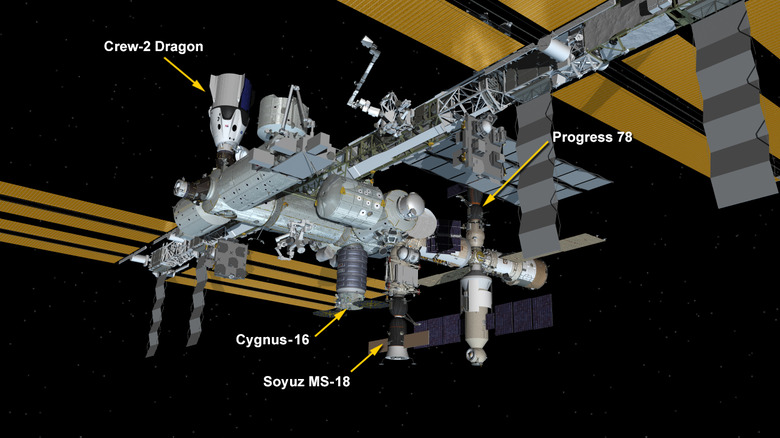The ISS Has A New Visitor: NASA Confirms Cygnus Docks With Science Haul
NASA has confirmed the International Space Station's latest – temporary – addition, with the Northrop Grumman Cygnus spacecraft successfully docking with the orbiting scientific platform this morning. Cygnus launched on August 10, and took two days to reach the ISS with its 8,200 pound payload of scientific experiments and supplies.
After reaching the general area of the ISS, the Cygnus space freighter took up a tentative position about 10 meters from the station. That's known as the capture point: within reach of the robotic arm that is tasked at reaching out and grabbing it for closer maneuvering.
Once grappled, with NASA astronaut Megan McArthur at the controls, Cygnus – named S.S. Ellison Onizuka – was remotely installed on the existing Unity module. That was completed at 9:42am ET, and the spacecraft will remain there for the next three months or so. A departure is scheduled for sometime in November 2021.
.@Astro_Megan commanded the @CSA_ASC #Canadarm2 robotic arm to grapple @NorthropGrumman's #Cygnus space freighter at 6:07am ET today. Next, ground controllers will remotely install Cygnus to the Harmony module. More... https://t.co/urKbAsEYJn pic.twitter.com/f2paRdmt2a
— International Space Station (@Space_Station) August 12, 2021
While the ISS astronauts are undoubtedly excited about the fresh supplies onboard the capsule, there's also some new work in there too. Several experiments have hitched a ride to the space station that way, some with considerable potential impact on future space missions like NASA's Artemis.
For example, the Redwire Regolith Print study looks to implement 3D printing techniques on a material that's been designed to be similar to Moon rocks and soil. Rather than having to physically bring building supplies from Earth to the Moon – or beyond, in future missions – the experiment theorizes that existing materials on other planets and moons could be used instead. That might be used for habitats and other structures, and potentially even tap astronaut urine as a key ingredient to that process.
In another experiment, dubbed the Flow Boiling and Condensation Experiment, possible solutions to dissipate heat from extended missions are being tested. While space is generally cold – and there's an unexpected amount of ice on the Moon, in fact – the increased power demands of longer space missions will also produce more waste heat that needs to be dissipated. One possible way to address that is a two-phase thermal management system, relying on both vaporization and condensation to be more effective but also smaller and lighter.

Similarly focused on removing waste products, the Four Bed CO2 Scubber hopes to help cut carbon dioxide levels on spacecraft. An earlier design is already in use – and has been for two decades, in fact – but this new version has been refined and relies on a longer-lasting absorbent material. It's not just space where that could be applicable: NASA says that there are also situations back on Earth, where the ability to remove carbon dioxide is essential.
In addition to the supplies and science experiments, Cygnus also has a new mounting bracket for the ISS itself. Intended to be added to the port side of the space station later this month, it'll be the fixing point for one of a new pair of solar arrays that are expected to add greater power capacity in due course.
